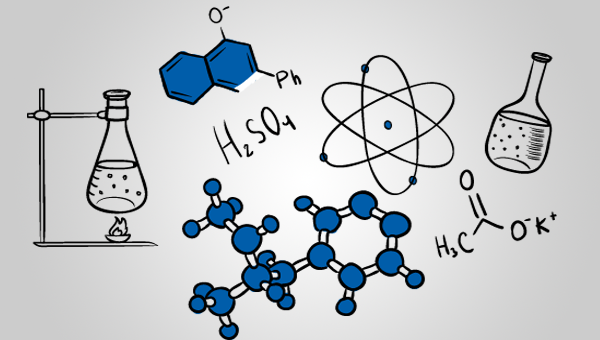Coca-Cola reacting to Stomach Acid! Awesome! but why does this happen?
What brought me this idea? First you must watch this!
You may have noticed this video about Coca-Cola reacting to Stomach Acid. It has been rounding around for almost a year in social networks. A couple of days ago it suddenly appeared again in facebook and I had just watched a friend shared it and when I saw that video, it brought me some curiosity, what happened in there? Why did Coca-Cola and Stomach Acid react on that way? And for those who like chemistry, it is a very good question. If you haven't seen that video yet, I will put it below for you to see it.
If you want to see the original Source, you can click here
First you have to know that this is a simulation, the component in the cup is almost the same solution as the one in our Stomach. Well, after watching the video I decided to start a search about it, my first surprise is that there is not an explanation about what happened, at least in the internet is not a reason why occurs this reaction, there are only descriptions about the experiment: changes of temperature, shape and nothing else; so, I tried to figure it out by myself.
So, What did I do then?
I started looking for what is the composition of both substances, Stomach Acid is pretty easy to find, wikipedia says that the principal component of Stomach Acid is HCL (hydrochloric acid) and there are other components involved like water, Na+ (Sodium ion) and K+ (Potassium ion), but HCL is the most important because a normal adult is able to generate around 1 to 2 liters per day of the HCL solution, which is able to bring down the pH inside the stomach to 1, only if the person is eating, which is too acid; for you to understand, Orange Juice pH is around 2 or 2.5, even Coca-Cola is between 2.5 and 3. It seems like our stomach is so strong eh?

Continuing, Coca-Cola's composition was very difficult to find and understand, to take it easy I just tried to analyze the composition's known part of the Classic Coca-Cola. In this case there are a few things involved, particularly there are two weak acids presented which are H3PO4 (Phosphoric Acid) and H2CO3 (Carbonic Acid), the last one in a lesser proportion, and there is usually one of two different sweeteners, these could be saccharose or fructose. Here comes the problem, there are some substances that are a secret for the rest of the world, these are the ones that give the tasty aroma to the Coca-Cola.

So, What comes next? Oh, This is the best part. I think!
Based on what I described above, what we saw in the video and my chemistry knowledge, I can suppose one simple theory to solve this curiosity. To convince you, remember this is a chemical reaction, a simple reaction like A + B → C + D, and happens many times with many Coca-Cola's components in one step. But "what kind of reaction?" would you ask; this is simple too, we have to focus on the principal substances that compound these reactions, almost all known components are acids, but only one is a really Strong Acid, the rest of the components are weak acids, or they are metabolized in a different way. What really happens with this fact is that weak acids will act as bases, and will start a reaction called "neutralization reaction". This means that H3PO4, H2CO3 and other acids will exchange their ion with HCL creating on that way what we see in the video, a mixture of different kind of suspensions or precipitates derived from those components. Pretty reasonable, isn't it?

And why does it have that color and texture?
Because the concentration of all components is too high and we don't see the quantity of each one, when they react, they form new chemical bounds, new components that are presented in a solid state and overcome the liquid volume that is showed in the whole video. There is not enough liquid to hold the precipitate, even when neutralization reactions generate water, the volume of the rest of the components is higher.
And why did it increased its temperature?
Because neutralization reactions are also exothermic reactions, this mean they generate heat when they happen. This fact can strongly support my theory.
And what happened to the unknown part of the Coca-cola's formula?
They are mostly, aromas, the important thing about these components is that they are a mixture of many substances that can be esters, an ester is usually derived from an acid. Besides that, I don't know what really happened to them, but they could be involved too.
Conclusion
I know watching at that video is scary, but you don't have to fear that much, the experiment is a simulation, maybe if you drink a cup of Coca-Cola will not happen something like that, because the solution volume in your Stomach is much higher, so the gastric acid will overcome that reaction and it will stop soon. but, maybe this is the reason why you fill up your stomach only with Coca-Cola. I hope you liked this explanation and remember this post is just a theory, everyone could have a different opinion.

D.H. GUISSEPE
Sources
https://es.wikipedia.org/wiki/Jugo_g%C3%A1strico
https://en.wikipedia.org/wiki/Gastric_acid
http://dimetilsulfuro.es/2014/02/19/la-formula-de-la-coca-cola/
https://eltamiz.com/2007/08/22/falacias-la-coca-cola-es-mala-por-ser-muy-acida/
https://www.thoughtco.com/list-of-strong-and-weak-acids-603642
https://en.wikipedia.org/wiki/Neutralization_(chemistry)
http://www.quimicaencasa.com/reacciones-quimicas-exotermicas-y-endotermicas/